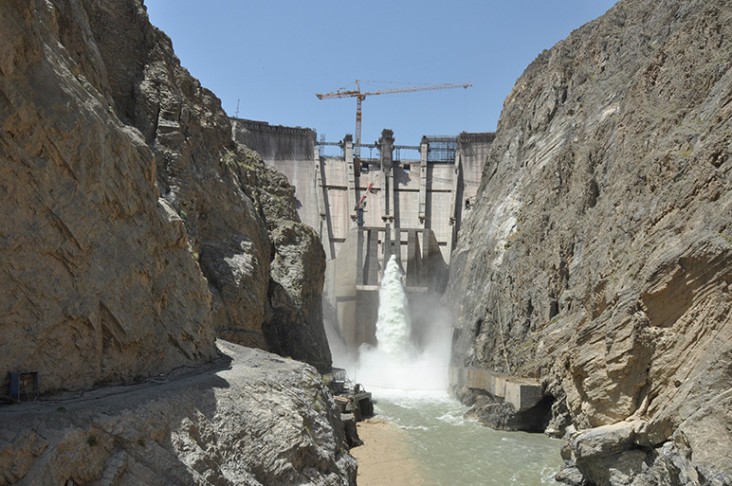
In Pakistan’s mountainous northwestern region, two towering dams serve as beacons of a secure, sustainable future.
The Government of Pakistan began constructing the Gomal Zam Dam in Pakistan’s Federally Administered Tribal Areas and the Satpara Dam in Gilgit-Baltistan more than a decade ago, but progress was slow due to security concerns and floods that submerged nearly one-fifth of the country in water. USAID began supporting the Government to complete the dams in 2011, in the wake of these floods, and they were finished in 2013.
“One of the main objectives of the dams is to protect downstream communities from flooding,” said Muhammad Nawaz, a development specialist at USAID/Pakistan. “Since they started operating, the dams have prevented millions of dollars of flood damage.”
The dams thwart flood damage by storing large amounts of water; water that can be used to boost health, livelihoods, and food security.
“USAID applied an integrated approach – never tried before – to store flood waters through the dams for generating electricity, irrigating thirsty lands, and providing drinking water for humans and livestock,” said Mr. Nawaz.
The dams are helping to mitigate Pakistan’s energy crisis, which causes rolling blackouts that last up to 16 hours in cities and up to 22 hours in rural areas. These blackouts are especially detrimental to irrigated agriculture, which accounts for 80 percent of farming in Pakistan. For the majority of farmers who rely on electric pumps to irrigate their crops, these blackouts can be the difference between food security and starvation.
When combined, the dams provide over 35 megawatts of electricity to the grid, and are supplying clean and inexpensive electricity to close to 80,000 families. Pakistan Minister for
Water and Power Khawaja Asif said this will “pave the way for progress and prosperity.”
But for families to thrive, they also need water for irrigation and for their families to drink. “The people living near the dams are among the poorest of the poor,” said Mr. Nawaz. “People and livestock drink from the same pond of dirty water in these areas.” To address this, the dams will provide water to irrigate over 200,000 acres of land. And the Satpara dam will provide more than 3 million gallons per day of water for household use.
“This water will now be the source of life for communities, their health and wealth – a blue and green revolution,” said Mr. Nawaz.
Harvesting Benefits
Building the dams was an arduous process, hampered at times by extreme climate events and the region’s uncertain security. But after the dams were completed, USAID staff faced a new, equally important endeavor: Building the capacity of local populations.
“The biggest challenge for us was to install effective water governance systems, from the government level down to the farmers themselves. In one major area, there was no irrigation department. And most farmers were used to inefficient traditional farming methods,” said Mr. Nawaz. “Behavior change is the hardest thing.”
To address this, USAID is working to build the skills and knowledge of local populations, from the people maintaining the dams to the governing bodies and farmers.
Junaid Khan, a senior mechanical engineer on the Gomal Zam Dam, said his colleagues have doubled their incomes as a result of working on the dam. “Those who were hired as unskilled labor are either learning skills or have already done so,” he said.
The efforts have been particularly transformative for farmers. USAID constructed new watercourses and relined existing watercourses to prevent leakages and to ensure the newly available irrigation water is used as efficiently as possible. Moreover, the Agency trained farmers on ways to boost production and water efficiency like tunnel farming, laser land leveling, sprinkler irrigation, and improved post-harvest management. Other efforts helped to establish over 200 water user associations where farmers could work together to allocate water use and govern water resources.
To further economic stability, USAID is teaching local women how to process fruit into products like jams and juices and helping them to market these products. “The women are very enthusiastic, eager learners,” said Ayaz Muhammad, project management specialist at USAID/Pakistan. “They are earning profits and sending their children to school.”
The combination of large-scale multipurpose infrastructure and capacity building is already paying dividends and locals are excitedly planning for a future in which floods, blackouts, and lack of water do not derail their efforts to feed their families. “I am feeling like I got the real price of my hard work this year,” said Zaiban, a mother-of-ten and fruit processor. “And I will do even better in the years to come.”
C. Zeilberger







Comment
Make a general inquiry or suggest an improvement.